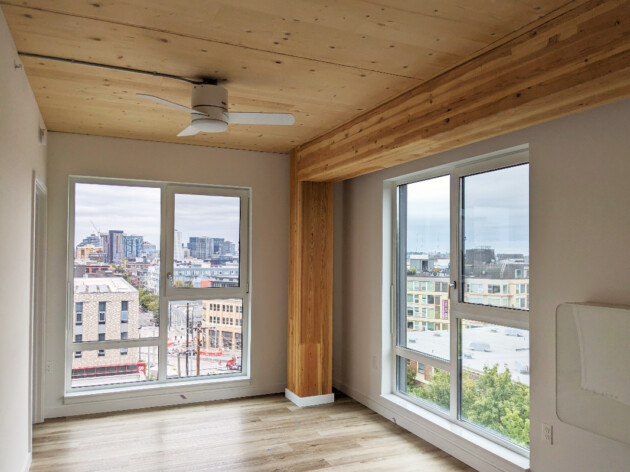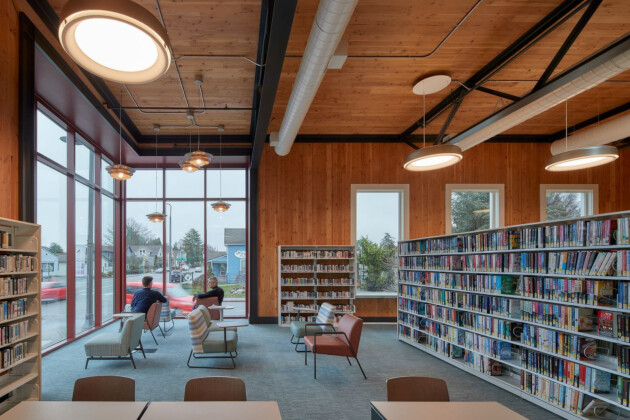
When Seattle’s eight-story Heartwood Apartments opens to residents this fall, it will be Washington’s tallest timber building and the first in the U.S. permitted under a set of new construction codes that allow for wooden high-rises up to 18 stories.
It’s a significant milestone in America’s shift toward mass timber as a lower-carbon alternative to concrete and steel, and the Pacific Northwest is helping lead the way. Seattle architect Susan Jones is a pioneer of the U.S. movement, spearheading the creation of the new codes and demonstrating the technology’s potential.
“There’s so much room for innovation and design with this new emerging material.”
– Susan Jones, owner of the architectural firm atelierjones
Wood has been a building material for as long as humans have constructed shelters. But over the 20th century, concrete and steel dominated as buildings became massive and soared skyward. Now wood is being engineered into products with enough strength and fire resistance to create the backbone of tall structures.

“Building on Washington’s historic strength in forestry and timber, advanced manufacturing and the substantial numbers of innovative architecture and construction companies here, we believe the state is ready to expand its leadership in the production and use of mass timber,” said Brian Young, clean technology lead for the Washington Department of Commerce, by email.
The expansion aligns with the state’s ambitious climate goals. The building and construction industries are responsible for 13% of global carbon emissions — largely due to concrete and steel. These sectors are trying to decarbonize, but it will take time.
Researchers have calculated climate benefits from using mass timber, though critics argue they’re overblown. Growing trees help the climate by consuming carbon and the lumber locks up the planet-warming gas for the life of the building, or longer if the wood is later reused. The wood that’s turned into mass timber typically comes from forests managed for harvest, not old-growth trees.
Research on the Heartwood project by the University of Washington, Pacific Northwest National Laboratory and others concluded that its carbon footprint was 40% less than a comparable build using steel and concrete, with additional benefits over time from the stored carbon.
Fire resistant and quake safe
Europe has been building with mass timber for the past couple of decades, but winning support in the U.S. has been challenging.
There’s a learning curve for builders and contractors to develop the skills needed for building with the material, which can add time and costs to a project. Domestic manufacturers only recently began selling mass timber products. There are still some code restrictions and permitting might take longer. The materials often cost more.
And at least historically, builders and permitters worried about mass timber’s performance, with fire safety at the top of the list. To gain approval for the new building codes, Jones served on a committee tackling fire resistance issues. At a national fire research lab, the group tried five times to burn down full-scale, two-story mass timber buildings.
“It didn’t work,” Jones said. “Four hours of fires. No sprinkler intervention. No fire department intervention. Really amazing.”